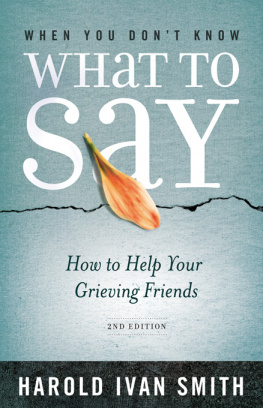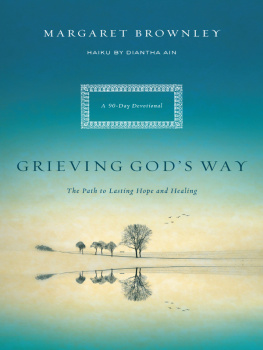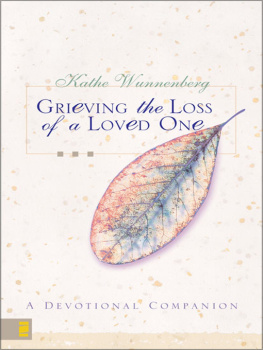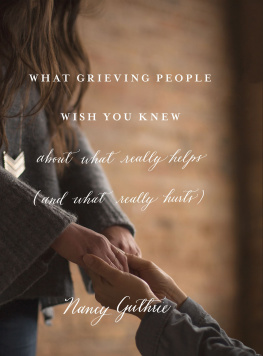Virtual Afterlives
VIRTUAL
AFTERLIVES
Grieving the Dead in the
Twenty-First Century
CANDI K. CANN
Due to variations in the technical specifications of different electronic reading devices, some elements of this ebook may not appear as they do in the print edition. Readers are encouraged to experiment with user settings for optimum results.
Copyright 2014 by The University Press of Kentucky
Scholarly publisher for the Commonwealth, serving Bellarmine University, Berea College, Centre College of Kentucky, Eastern Kentucky University, The Filson Historical Society, Georgetown College, Kentucky Historical Society, Kentucky State University, Morehead State University, Murray State University, Northern Kentucky University, Transylvania University, University of Kentucky, University of Louisville, and Western Kentucky University.
All rights reserved.
Editorial and Sales Offices: The University Press of Kentucky
663 South Limestone Street, Lexington, Kentucky 40508-4008
www.kentuckypress.com
Library of Congress Cataloging-in-Publication Data
Cann, Candi K.
Virtual afterlives : grieving the dead in the twenty-first century / Candi K. Cann.
pages cm
Includes bibliographical references and index.
ISBN 978-0-8131-4541-9 (hardcover : alk. paper)
ISBN 978-0-8131-4543-3 (pdf) ISBN 978-0-8131-4542-6 (epub)
1. MemorializationSocial aspects. 2. DeathSocial aspects. 3. BereavementSocial aspects. 4. InternetSocial aspects. I. Title.
GT3390.C36 2014
393dc23 2014003472
This book is printed on acid-free paper meeting the requirements of the American National Standard for Permanence in Paper for Printed Library Materials.
Manufactured in the United States of America.
| Member of the Association of
American University Presses |
This book is dedicated to my brother
Kelly Ryan Cann (19722012).
Kelly, here are thousands and thousands of paragraphs just for you!
I love and miss you.
Thanks for being my little brother.
Never again will the real have the chance to produce itselfsuch is the vital function of the model in a system of death, or rather of anticipated resurrection, that no longer gives the event of death a chance.
Jean Baudrillard
I believe that ghosts are part of the future and that the modern technology of images... like cinematography and telecommunication... enhances the power of ghosts and their ability to haunt us.
Jacques Derrida
Contents
Preface
I sent the initial project proposal for this book to the publisher the same day my brother collapsed and was taken to the hospital. He died less than forty-eight hours later, and I went to the funeral home to help make arrangements for his cremation on my way to the Columbia University Seminar on Death, where I presented the first draft of my chapter on Internet memorialization. Writing this book while mourning has made this manuscript deeply personal, relevant, and sometimes difficult, but it has been a gift, as I have been able to connect my research to my own bereavement journey.
The difficulty with death is that it is disruptive. It comes when we least expect it, even though we may have done everything we could to plan for it. We mourn the dead whose very absence is being disappeared. Contemporary society denies the place of the dead in both literal and figurative ways: corpses are relegated to burial in cemeteries outside the city center or are burned to ashes, whereas remembrance of the dead is often shortened or denied altogether. We speak of moving on and moving forward; we busy ourselves with plans to memorialize and make museums for remembrance. But the dead have gone missing from the realm of the livingthey are, like their memorials, repackaged, the very disjuncture of death denied in its most crucial moment. This book first emerged from my doctoral work on martyrs and the way in which they are remembered and then repackaged in narrative stories. As I conducted that work, I also watched the developing popularity of grassroots memorialization and the ways in which people construct their own discourses of remembrance for the dead. These popular expressions of memorialization are not that different from martyr narratives, in that both seek to create meaning from death, while also seeking recognition for the bereaved. Grassroots memorialization is not limited to the American context, however, and this book is an examination of the phenomena of memorialization in the United States in a comparative perspective. It is by no means exhaustive, but it does attempt to give a glimpse of which aspects of popular memorialization that are growing here are also surfacing in Asia and Latin America.
Ultimately, this book seeks to answer why this is occurring. I believe that memorialization has increased so much because death itself is disappearing. As in Baudrillards quote, the dead are being resurrectedin religious afterlives or memorial ones, and death is being eclipsed by the act of remembering. What is also important, though, is the ways in which memorializing democratizes death and gives a voice to marginal grieversthose who are not given a place in society to grieve, either because of their position in society or because the type of death they have experienced is considered taboo or is not publicly sanctioned. Death is disruptive, but, ultimately, it is only because of death that we have life.
Introduction
American Grief: A Brief Historical Background
The face of grieving in American culture has changed dramatically in the last two hundred years. Traditionally, there were established grieving rituals that one followed after a deathmourning was a liminal state in which one withdrew from society and could grieve the dead, and then return to social norms and expectations. Evidence of such mourning rituals was fairly universal and included the wearing of mourning clothing and observing a certain period of enforced bereavement, during which one was both expected and permitted to take time off from traditional social events such as dinners, dances, and so on. One would also take time from ones occupational duties, after which one would generally reenter the world and participate in everyday social and work activities, commemorating the anniversary of the death on a regular basis. These traditional grieving rituals occurred during a time when people themselves were still in charge of most of the aspects of both dying and death, giving care to those dying in the home; washing, dressing, and preparing the body for the funeral following the death; and then disposing of the dead in the local cemetery or churchyard.
Over the last couple of hundred years, however, grief in the United States and the ways in which it is observed have drastically changed; several major events accompanied this transition of grief and mourning: the Industrial Revolution, the American Civil War, and advances in health care and medicine. The Industrial Revolution helped lead to the compartmentalization of work, so that it was no longer tenable to care for the dying and the dead. Workers labored long hours, and it wasnt practical to keep bodies in the home in large cities, where sanitary conditions were minimal and largely dependent on ones neighbors. Having dead bodies in such close quarters was not viewed as a practical or desirable situation and was socially Both dying and death were effectively taken out of church and home, leaving little or no contact between the living and the dead.












